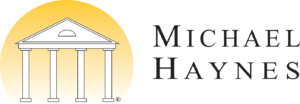The decision to seek a patent should be thoroughly and carefully considered. The patenting process can be expensive, lengthy, and risky, not to mention frustrating. Yet, the rewards can be substantial.
Generally, one should seek a patent if the expected risk-adjusted return justifies the investment in the patent. For some, merely having their name on a patent, or a patent number on their product, is incredibly valuable, particularly when marketing their capabilities to potential investors, customers, employees, etc.
For others, the opportunity to obtain royalties or other forms of licensing revenue from those who wish to manufacture, use, sell, and/or distribute the patented product is an ample justification to pursue patenting.
For still others, the right to exclude competitors from making, using, importing, or selling the patented innovation can provide a sufficient reward for their investment in obtaining the patent.
Despite the beckoning of these potential benefits, recognize that the patent process is moderately risky. For example, not all patent applications result in issued patents. Although the percentage varies from year-to-year, roughly 65-70% of original patent applications are eventually granted, while the remaining patent applications are abandoned, with their subject matter potentially dedicated to the public domain. Keep in mind that this percentage includes all original patent applications, including:
- applications for which no patentability search was performed, most of which thereby fail to describe or claim a truly patentable innovation;
- applications filed by innovators who represent themselves before the USPTO, without the assistance of a competent patent attorney, and who eventually become overwhelmed by the complexities of the patenting process and quit;
- applications directed toward subject matter that, while patentable, is no longer in sync with the company’s chosen business directions; and
- applications filed by those who ultimately lack sufficient financial resources to prosecute the application to issuance.
Thus, when sufficient resources are properly applied, the likelihood of success with the patenting process can be greatly improved with respect to this 65-70% metric. Generally, the better the patentability search, the better the preparation of the patent application, and the better the prosecution of that application, the greater the odds are that the application will be issued, assuming the applicant remains committed to obtaining that patent. Similarly, the better the business plan, and the better the implementation of that plan, the greater the likelihood that a substantial return will be earned on the issued patent.
Applying appropriate patent valuation techniques allows one to determine the potential returns, investments, and risks, along with the likely timings of each of those financial events. With that information in hand, an appropriate business plan can be developed for obtaining the optimal return on your patent investment.
